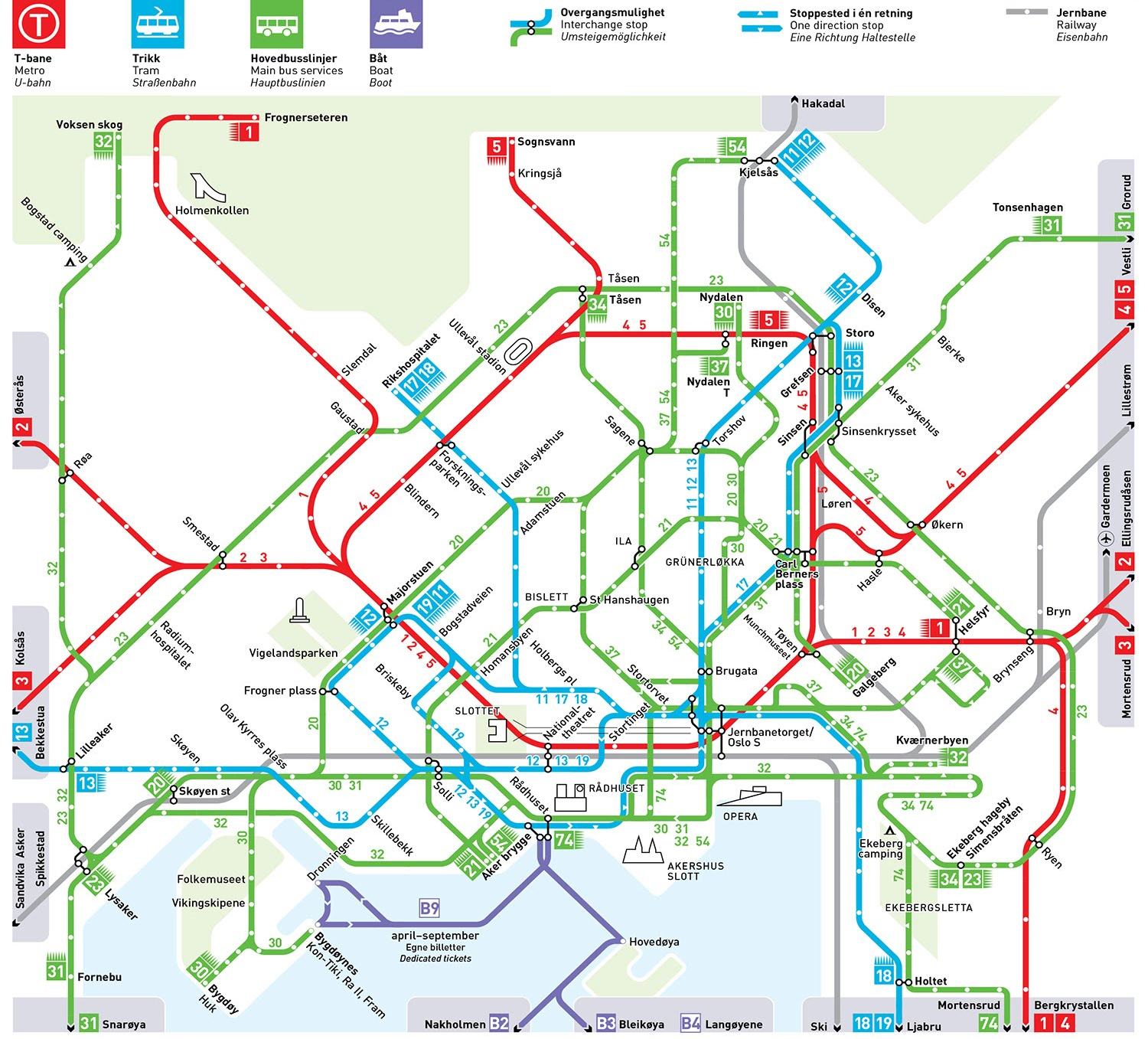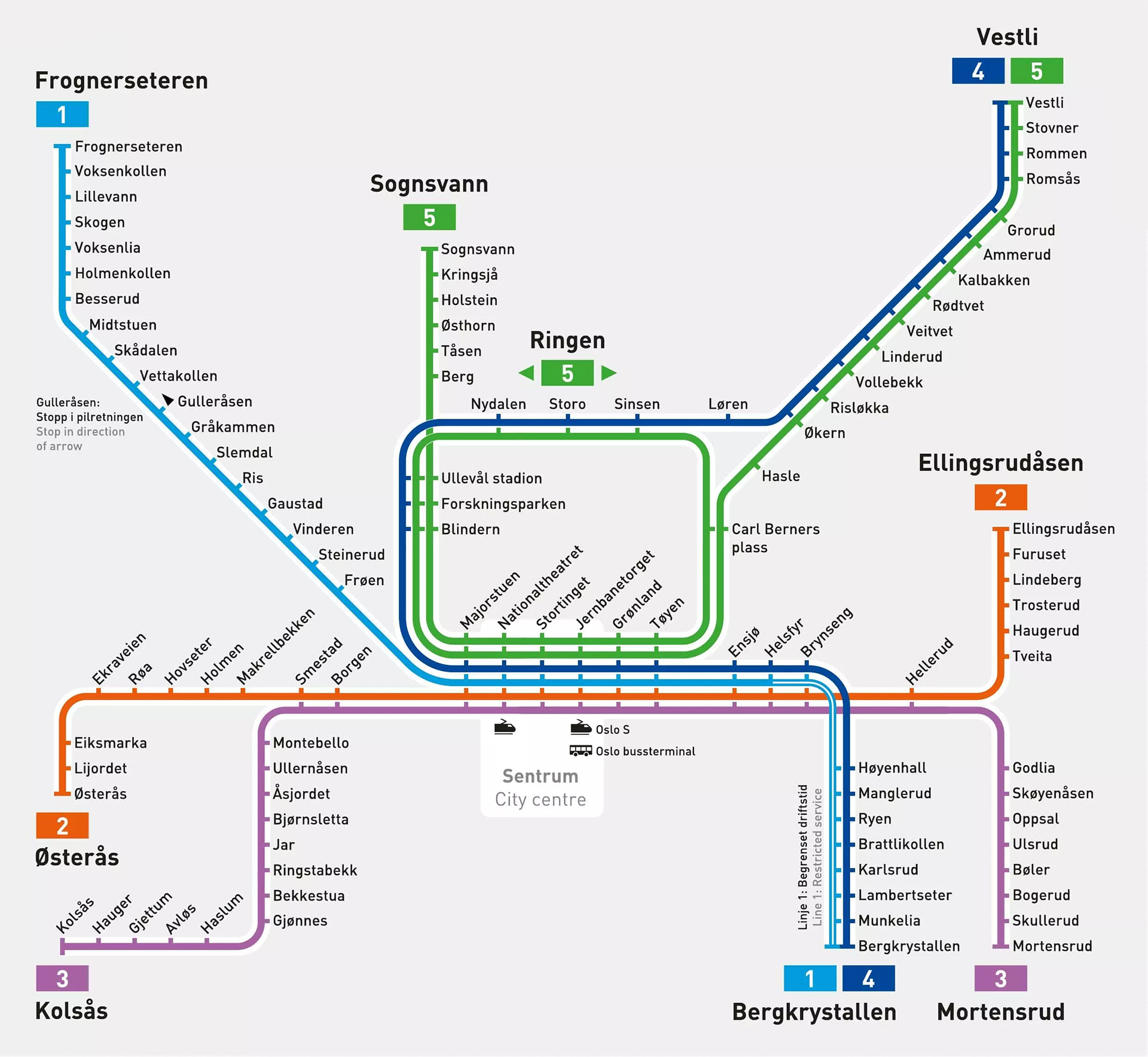Expats moving to Oslo often find themselves in the nation’s financial and cultural centre, often considered the metropolitan heart of Norway. With its close proximity to the forests and hills, the region offers the best of both worlds.
There is a wide range of public transport in Oslo and it is generally convenient for travellers to use it to get around.
Tourists regularly use the metro, tram and bus networks. One of the most convenient aspects of this transport system is that whatever the mode of transport, it is all operated by the same operator, Ruter. This means that the ticketing system and fares for public transport in Oslo are the same everywhere, making it efficient to travel on one of the many networks.
You can also explore the beauty of Oslo by ferry, which runs between the Oslofjord islands and Vippetangen quay on the mainland. The express boat Princessin, which departs from the pier at Aker Brygge, takes you around Haoya, Langara, Ildjernet and Drobak.
Public Transportation System In Oslo Map
Map of Public Transportation. Click on the map to enlarge it or download the Public Transportation System In Oslo map in PDF format.
Local trains in Oslo
NSB, the Norwegian State Railways, is responsible for the operation of local trains. There are a number of commuter lines, the most popular of which is between Drammen and Oslo. This route passes through towns such as Asker, Lysaker and Skoyen. A word of warning: be careful when travelling on this service, especially during rush hours, as the trains tend to be overcrowded.
T-Bane or Metro Service in Oslo
Map of Oslo Metro showing different lines and stations. Click on the map to enlarge it or download the Oslo Metro map in PDF format.
For leisure travellers and commuters alike, Oslo’s T-Bane or subway network is the most popular means of transport. There are six lines, each numbered from one to six, covering most of the city. There is a common tunnel through the city centre where all the lines converge. So whether you catch a train from Toyen, Gronland, Jernbanetorget, Stortinget, Nationaltheatret or Majorstuen stations, the T-Bane will eventually take you through the city centre. Lines four and six also form a central ring along the north of the city centre, with Storo/Nydalen as the junction.
For tourists, line one is the most popular way to get to the National Ski Arena and the Holmenkollen ski jump. This line is also the easiest way to reach Nordmarka, a popular hiking and skiing destination for locals.
Trams in Oslo
The tram network – Trikken, as the Norwegians call it – is a slow and old transport system that takes you around the city of Oslo. Nevertheless, it serves as a vital link to many parts of the city. Some of the popular tourist destinations that can be easily reached by tram are Grunerlokka, Aker Brygge, Bislett Stadion and Vigeland Sculpture Park. Most of the attractions in the city centre are also accessible by this ancient means of transport.
Public bus network in Oslo
There are two types of public bus service in the city of Oslo. The local buses are marked in red and criss-cross the city, providing travel links to all those regions that are not connected by any other means of public transport. Regional buses, on the other hand, are marked in green and travel to other parts of Norway, ideally starting from Oslo bus station.
Note that you can also use the green bus to travel within the city limits, but you must enter through the front door, show your identity card and tell the driver if you want to travel within the city limits or beyond. There are no restrictions for red buses.
Passenger ferry service in Oslo
Even if you have a Ruter ticket, it is only valid on a limited number of passenger ferries and boats. These ferries usually serve the areas in zone number one, namely the islands of Langoyene, Gressholmen, Bleikoya, Nakholmen, Lindoya and Hovedoya. There are also commuter ferries from Oslo to Nessoden and many other towns further down the Oslofjord. While all routes operate all year round, some services, such as route 94 between Langoyene and Oslo, only operate during the summer months. The Norwegian Maritime Service is responsible for ferry operations.
Public transport in Oslo: Jernbanetorget, or Oslo Central Station, is the area of the city with the highest volume of passenger traffic. It is also the place where tourists should go to get more information about the various public transport services in Oslo and the special discounts on single and double tickets. Trafikanten Central, located under the large glass and metal clock tower near the train station, is the best place to get all the information you need. Remember that you are in a city like any other, so common sense is essential. Break-ins and petty theft are common on Oslo’s public transport network, so take every precaution when travelling.

